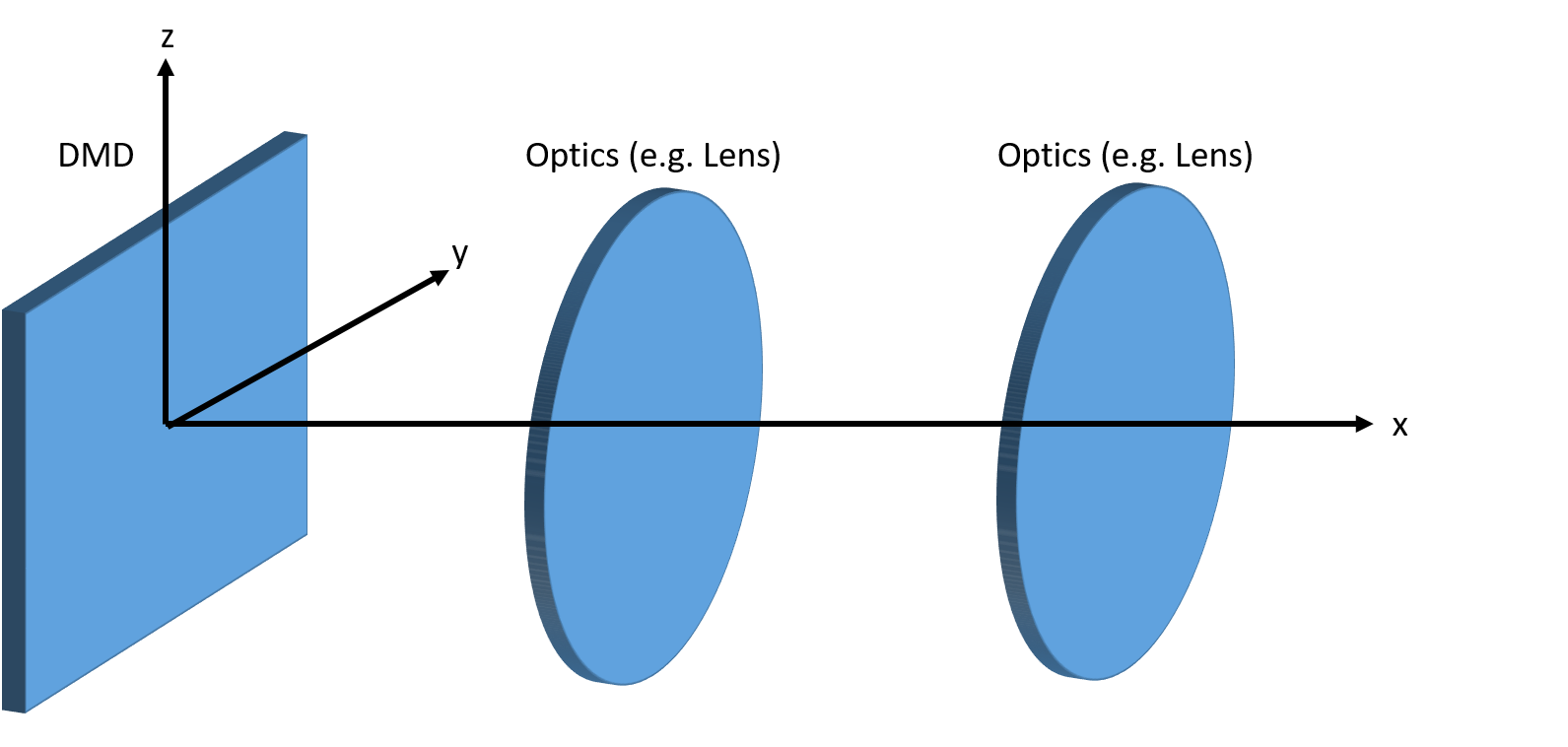Part Number: DLPLCR6500EVM
Hello,
I would like some clarification for the angle in which the illumination of the DMD should be done to get a horizontal beam. I have already seen the datasheet and this document (www.ti.com/.../dlpa022.pdf) but it is still not very clear for me.
Could you please let me know in terms of cartesian coordinates, where the 24 and 45 degrees are oriented? Here is a schematic so that we have the same reference.
So my optical axis here is in the x-axis. Right now I'm confused if the illumination should come at angle of -45 degrees between x and y, i.e. rotate the illumination source towards the negative y axis, and then 66 degrees between x and z (so that the source is 24 degrees away from the z axis); or if it should be -24 between x and y, and 45 between x and z, or if it is another configuration. Please let me know the correct configuration to get a beam in the x-axis.
Thanks!



